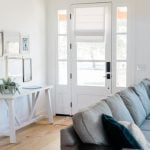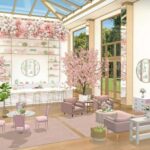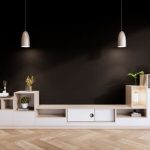Are you looking to transform your living space into a cozy and visually appealing home? This article will guide you on how to interior decorate your home, exploring the significance of interior decoration in crafting a comfortable and aesthetically pleasing environment. The way we decorate our homes can have a significant impact on our overall well-being, making it crucial to approach interior decoration with careful consideration and attention to detail.
Assessing Your Space is crucial when it comes to interior decorating. Whether you live in a spacious house or a cozy apartment, understanding the layout, size, and natural lighting of your space is essential in determining the best decorating approach. By evaluating these factors, you can make informed decisions that enhance the functionality and visual appeal of each room.
Setting a Budget for interior decoration is also important for creating a beautiful home without breaking the bank. In this section of the article, we’ll provide practical advice on developing a realistic budget, along with cost-saving tips and budget-friendly resources that will help you achieve your desired look without overspending. From assessing your space to setting a budget, taking these initial steps will lay the foundation for an enjoyable and successful interior decorating experience.
Assessing Your Space
When it comes to interior decorating, one of the most important factors to consider is assessing your space. The layout, size, and natural lighting of your home will all play a significant role in determining the best decorating approach. Start by taking a thorough look at each room and evaluating its individual characteristics. Consider how you want each room to function and any unique features you want to highlight.
The layout of your home will greatly impact how you arrange furniture and decor. Make note of any architectural elements such as fireplaces, built-in shelving, or large windows that can serve as focal points or impact furniture placement. Additionally, take measurements of each room to ensure that furniture pieces will fit properly and allow for comfortable movement throughout the space.
Natural lighting is another crucial aspect to consider when assessing your space. Pay close attention to how light enters each room throughout the day and take note of any areas that may require additional lighting sources. Understanding the natural lighting in your home will influence color choices, decor placement, and overall ambiance.
Assessing your space thoroughly will provide valuable insight into how to maximize its potential through interior decoration. By understanding its layout, size, and natural lighting, you’ll be better equipped to make informed decisions when selecting furniture arrangements, color palettes, and decor pieces that will enhance each room’s unique features.
| Aspect | Consideration |
|---|---|
| Layout | Evaluate architectural elements and measurements for proper furniture placement. |
| Size | Determine how each room will function based on its size. |
| Natural Lighting | Analyze how light enters each room throughout the day for color choice and decor placement. |
Setting a Budget
When it comes to interior decorating, one of the most important aspects to consider is setting a budget. Without a clear understanding of how much you’re willing to spend, it can be easy to overspend and end up with a project that is beyond your financial means.
To start, it’s essential to take an inventory of your current finances and determine how much you can realistically allocate towards interior decoration. This may involve taking a look at your overall household budget and identifying areas where you can cut back in order to prioritize your decorating expenses.
Once you have a clear understanding of your budget, it’s important to explore cost-saving tips and budget-friendly resources that can help make the most out of your decorating funds. One practical approach is to consider DIY options for certain aspects of the decoration process, such as painting walls, refinishing furniture, or creating personalized decor pieces. Not only can this save money, but it also adds a unique touch to your home that reflects your personality and style.
In addition to DIY options, there are also plenty of budget-friendly resources available for interior decoration. Thrift stores, garage sales, and online marketplaces are great places to find affordable furniture and decor pieces that can be repurposed or refurbished to fit your design scheme.
Additionally, considering alternative materials or finishes for certain items can also help keep costs down without sacrificing style. By being mindful of your budget and seeking out cost-saving opportunities, you can create a beautifully decorated space without breaking the bank.
Choosing a Color Palette
When it comes to interior decorating, choosing the right color palette is essential in creating a cohesive and visually appealing home. The psychology of color plays a significant role in influencing our emotions and moods, making it important to carefully select colors that not only compliment your personal style but also evoke the right atmosphere for each room. Understanding the effects of different colors can help you make informed decisions when choosing a color scheme for your home.
The Psychology of Color
Color psychology is the study of how colors affect human behavior, emotions, and mood. For example, warm colors such as red, orange, and yellow are known to create a sense of energy and warmth, making them ideal for living areas or dining rooms.
On the other hand, cool colors like blue, green, and purple tend to have a calming effect and are suitable for bedrooms or home offices. By considering the psychological impact of various colors, you can choose hues that reflect the desired ambiance for each room in your home.
Selecting a Cohesive Color Scheme
When selecting a color palette for your home, it’s important to choose hues that work well together and create a unified look throughout your space. One approach is to use a color wheel to identify complementary or analogous colors that harmonize with each other.
Additionally, using varying shades of the same color can add depth and interest to your decor while maintaining cohesion. Whether you opt for monochromatic, complementary, or analogous color schemes, ensuring that the chosen colors complement each other will result in a balanced and visually pleasing interior.
Complimenting Your Personal Style
Your personal style should be reflected in the color palette you choose for your home. Whether you prefer bold and vibrant hues or soft and neutral tones, incorporating colors that resonate with your individual taste is essential in creating a space that feels authentic to you. Consider elements such as texture, pattern, and furnishings when selecting your color scheme to ensure that it aligns with your personal aesthetic while enhancing the overall design of your home.
Furniture and Decor Selection
When it comes to selecting furniture and decor pieces for your home, it’s important to consider the functionality of each item. For example, if you have a small living room, choosing a large sectional sofa may not be the best option as it can make the space feel cramped.
Instead, consider a smaller sofa or a couple of armchairs that can provide seating without overwhelming the room. Additionally, multi-functional furniture pieces such as storage ottomans or nesting tables can help maximize space in smaller homes while providing added functionality.
In terms of style, it’s essential to choose furniture and decor pieces that complement your overall design aesthetic. Whether your preference is modern minimalist, traditional rustic, or eclectic bohemian, selecting items that align with your style will create a cohesive and harmonious look throughout your home. Consider factors such as color, material, and shape when choosing furniture and decor pieces to ensure they blend seamlessly with your existing design scheme.
While staying within budget is crucial when furnishing and decorating your home, there are many ways to find budget-friendly options without sacrificing quality. Thrift stores, online marketplaces, and discount retailers often offer well-made furniture at affordable prices. Upcycling or refurbishing second-hand items can also be a cost-effective way to add unique pieces to your home while staying within budget constraints.
| Category | Tips |
|---|---|
| Functionality | Consider multi-functional furniture for small spaces. |
| Style | Select pieces that align with your design aesthetic in terms of color, material, and shape. |
| Budget-Friendly Options | Look for affordable but high-quality items at thrift stores or online marketplaces. |
Creating a Focal Point
When it comes to interior decorating, creating a focal point in each room is essential for drawing attention to its unique features. This strategy helps to enhance the overall design and decor of the space, making it more visually appealing and cohesive. Here are some strategies for identifying and highlighting a focal point in each room.
Assessing the Space
Before identifying a focal point, it’s important to assess the layout and size of the room. Determine which feature stands out the most – it could be a fireplace, a large window with a scenic view, or a piece of furniture. Understanding the natural flow of the room will help you decide where to place the focal point and how to draw attention to it through design and decor.
Choosing the Focal Point
Once you’ve assessed the space, choose a focal point that best represents the room’s purpose and style. For example, in a living room, a fireplace or an art piece above the mantel can serve as a focal point. In a bedroom, it could be an eye-catching headboard or an accent wall with wallpaper. Selecting the right focal point is crucial for creating balance and visual interest.
Highlighting Through Design and Decor
After choosing the focal point, use design elements such as lighting, color schemes, and furniture arrangement to draw attention to it. For instance, placing accent lighting above the artwork on display or using contrasting colors can help highlight the chosen feature. Additionally, arranging furniture around the focal point can create a natural flow within the room while emphasizing its unique characteristics. Overall, effective highlighting through design and decor will elevate the visual appeal of your space.
Lighting and Ambiance
When it comes to interior decorating, lighting plays a crucial role in setting the mood and enhancing the overall ambiance of your home. By strategically using different types of lighting, you can create various moods and highlight specific areas within each room. Here are some tips on how to use lighting to transform your living space:
- Consider the function of each room: Different rooms serve different purposes, so it’s important to consider the function of each space when planning your lighting design. For example, task lighting is essential in the kitchen for food preparation, while ambient lighting is more suitable for creating a cozy atmosphere in the living room.
- Layer your lighting: To achieve a well-balanced and dynamic lighting scheme, it’s important to layer different types of lighting, including ambient, task, and accent lights. By combining these elements, you can create depth and visual interest in the room.
- Use dimmers: Installing dimmer switches allows you to adjust the level of brightness in a room according to your needs and preferences. This flexibility can help you create different moods throughout the day and adapt to various activities.
In addition to setting the right mood, proper lighting can also emphasize certain areas within your home. Whether it’s a piece of artwork on the wall or a beautiful piece of furniture, using strategic lighting can draw attention to these focal points and enhance their visual appeal.
Lastly, creating an overall ambiance in your home requires careful consideration of not only artificial but also natural light sources. If possible, maximize natural light by keeping windows free from heavy coverings and utilizing mirrors to reflect light into darker areas. By incorporating these strategies into your interior decoration plan, you can truly transform your living space into a warm and inviting sanctuary.
Personalizing Your Space
Once you have assessed your space, set a budget, and chosen a color palette for your home, it’s time to focus on personalizing your space. Incorporating personal touches, family photos, and meaningful decor can truly transform a house into a home. Here are some ideas for adding personalized elements to your interior decoration:
- Family Photos: Displaying family photos is a great way to add a personal touch to your home. Create a gallery wall of framed photographs or showcase them in stylish photo frames on shelves or side tables.
- Memorabilia and Keepsakes: Consider incorporating items that hold sentimental value, such as travel souvenirs, heirlooms, or handmade crafts from loved ones. These pieces not only add personality but also serve as great conversation starters.
- Artwork and DIY Projects: Showcase your creative side by displaying artwork or DIY projects that you have created. Whether it’s paintings, sculptures, or handmade crafts, these pieces will add a unique and personal touch to your home.
By incorporating these personalized elements into your interior decoration, you can create a warm and inviting atmosphere that truly reflects your personality.
Remember that the key to successful personalization is balance – avoid cluttering the space with too many personal items. Instead, focus on selecting meaningful pieces that contribute to the overall aesthetic of the room while also creating a sense of comfort and familiarity.
Whether it’s through cherished family photos, memorable keepsakes, or unique artwork, infusing personal touches into your home decor will make it feel like an extension of yourself and create a welcoming environment for both you and your guests.
Maintenance and Longevity
In conclusion, interior decorating is an essential aspect of creating a comfortable and visually appealing home environment. By assessing your space, setting a budget, choosing a color palette, selecting the right furniture and decor, creating focal points, utilizing lighting effectively, and personalizing your space, you can transform your home into a personalized sanctuary that reflects your style and personality.
However, it’s important to note that maintaining your interior decoration over time is crucial to ensure its longevity and continued appeal.
One key aspect of maintaining your interior decoration is regular cleaning and organization. Dusting furniture, vacuuming carpets, and decluttering surfaces can help keep your home looking fresh and inviting. Additionally, implementing effective storage solutions can prevent clutter from accumulating and ensure that your space remains functional and visually appealing.
It’s also important to make updates to your interior decoration as needed. Over time, styles evolve, and your personal preferences may change. Consider periodically updating decor pieces or making small changes to the layout or color scheme to keep your home feeling current and reflective of your taste. By regularly assessing the condition of your interior decoration and making necessary updates, you can ensure that it continues to enhance the overall ambiance of your home for years to come.
Overall, maintaining the longevity of your interior decoration requires ongoing care, attention to detail, and a willingness to adapt to changing tastes and needs. By incorporating these maintenance tips into your routine, you can preserve the beauty and functionality of your home’s interior while continuing to enjoy a welcoming and personalized living space.
Frequently Asked Questions
What Are the 7 Principles of Interior Design?
The 7 principles of interior design are unity, balance, rhythm, emphasis, contrast, scale and proportion, and harmony. Unity refers to the cohesive feel of a space, while balance relates to the even distribution of visual weight in a room.
Rhythm creates movement and flow throughout the space, while emphasis highlights the focal point of a room. Contrast adds visual interest through differences, and scale and proportion ensure that furniture and decor fit harmoniously within the space.
How Do I Start Interior Decorating My House?
To start interior decorating your house, begin by assessing your personal style and creating a budget. Next, consider the function of each room and how you want to use the space.
Use color schemes and textures to create a cohesive look throughout your home, and don’t forget about lighting – it can significantly impact the ambiance of a room. Finally, take measurements and start selecting furniture and decor pieces that fit your vision.
How Can I Make My House Look Nice Inside?
To make your house look nice inside, focus on decluttering and organizing each room. Consider adding pops of color or statement pieces for visual interest. Pay attention to lighting – natural light can make a space feel inviting.
Incorporate indoor plants or fresh flowers for a touch of nature indoors. Consider incorporating artwork or decorative mirrors to add personality to your walls. Lastly, invest in quality furniture pieces that are both functional and stylish for an overall polished look inside your home.

I’m thrilled to be your companion on this exciting journey through the world of home decor and design. With a passion for turning houses into homes and a keen eye for the finer details, I’m here to help you transform your living spaces into beautiful, functional, and meaningful havens.





